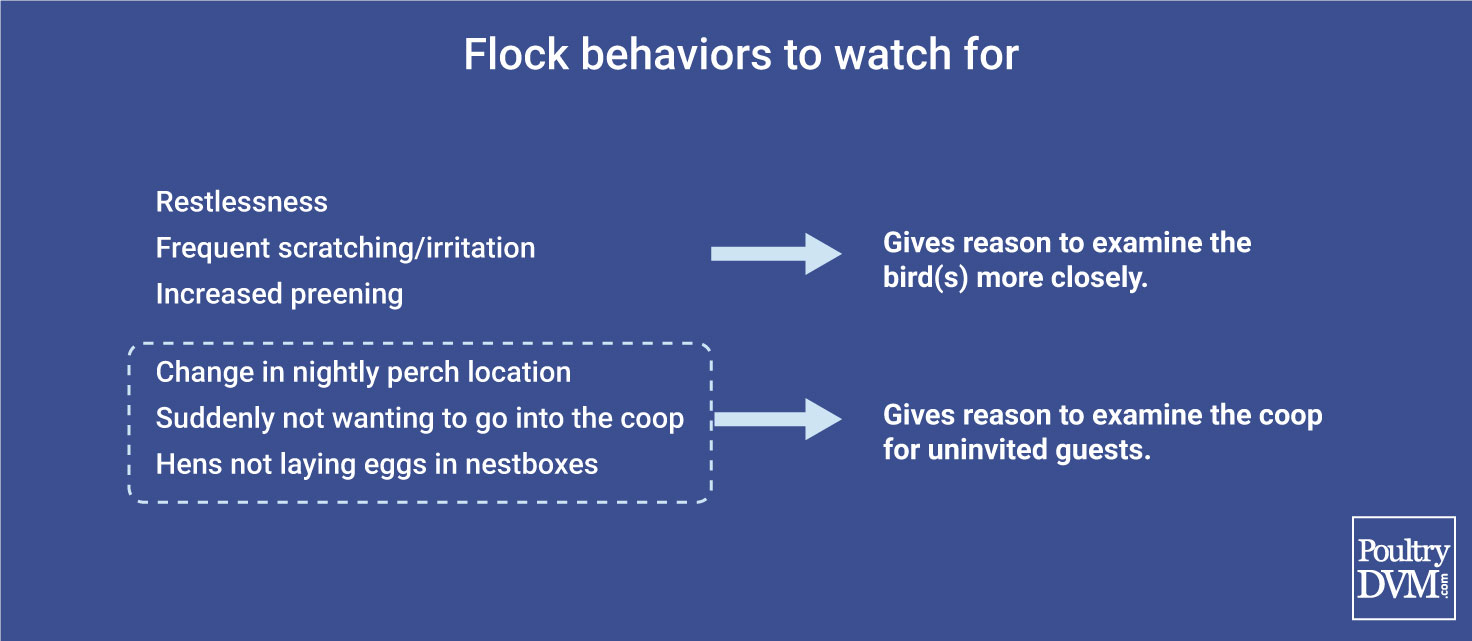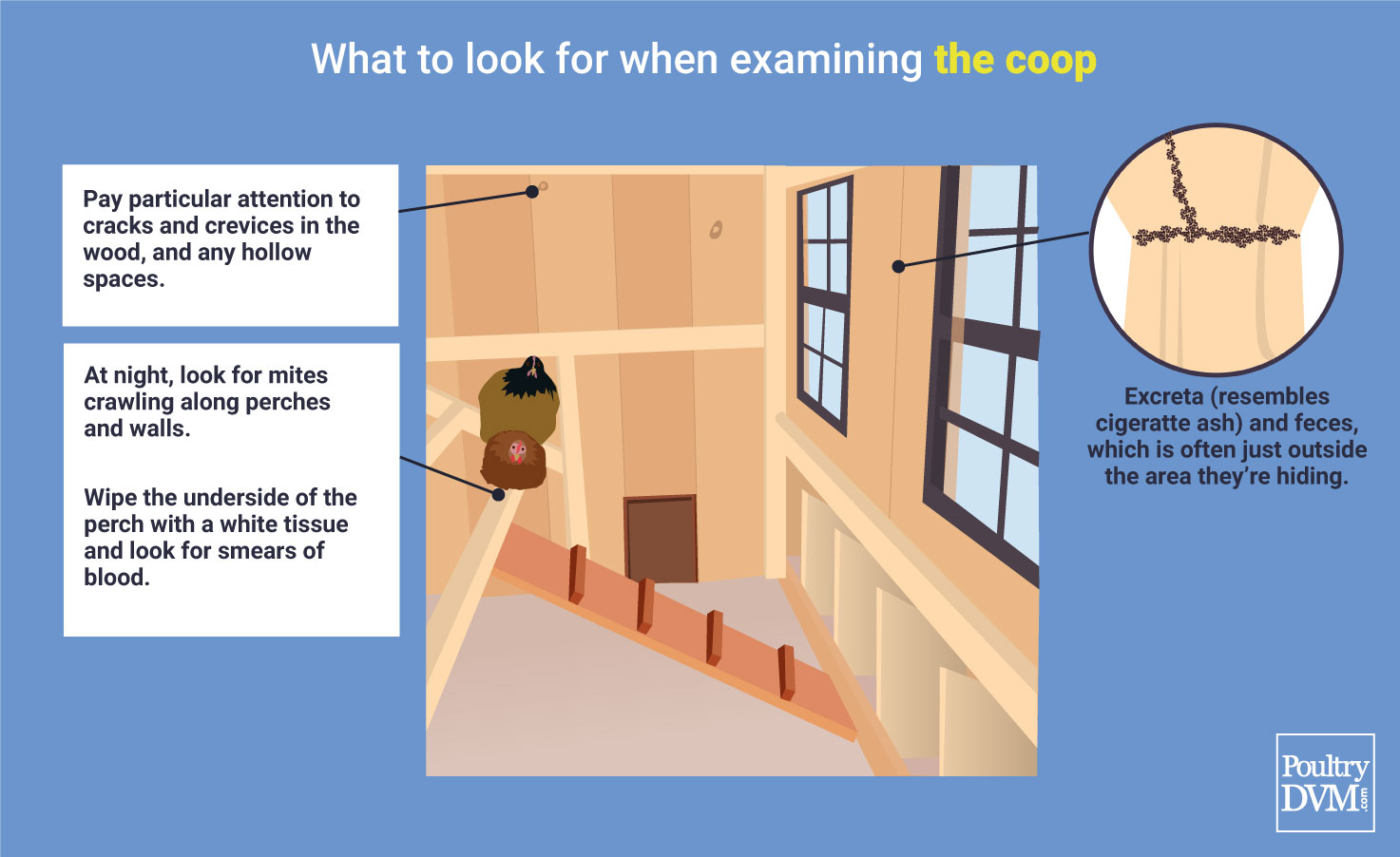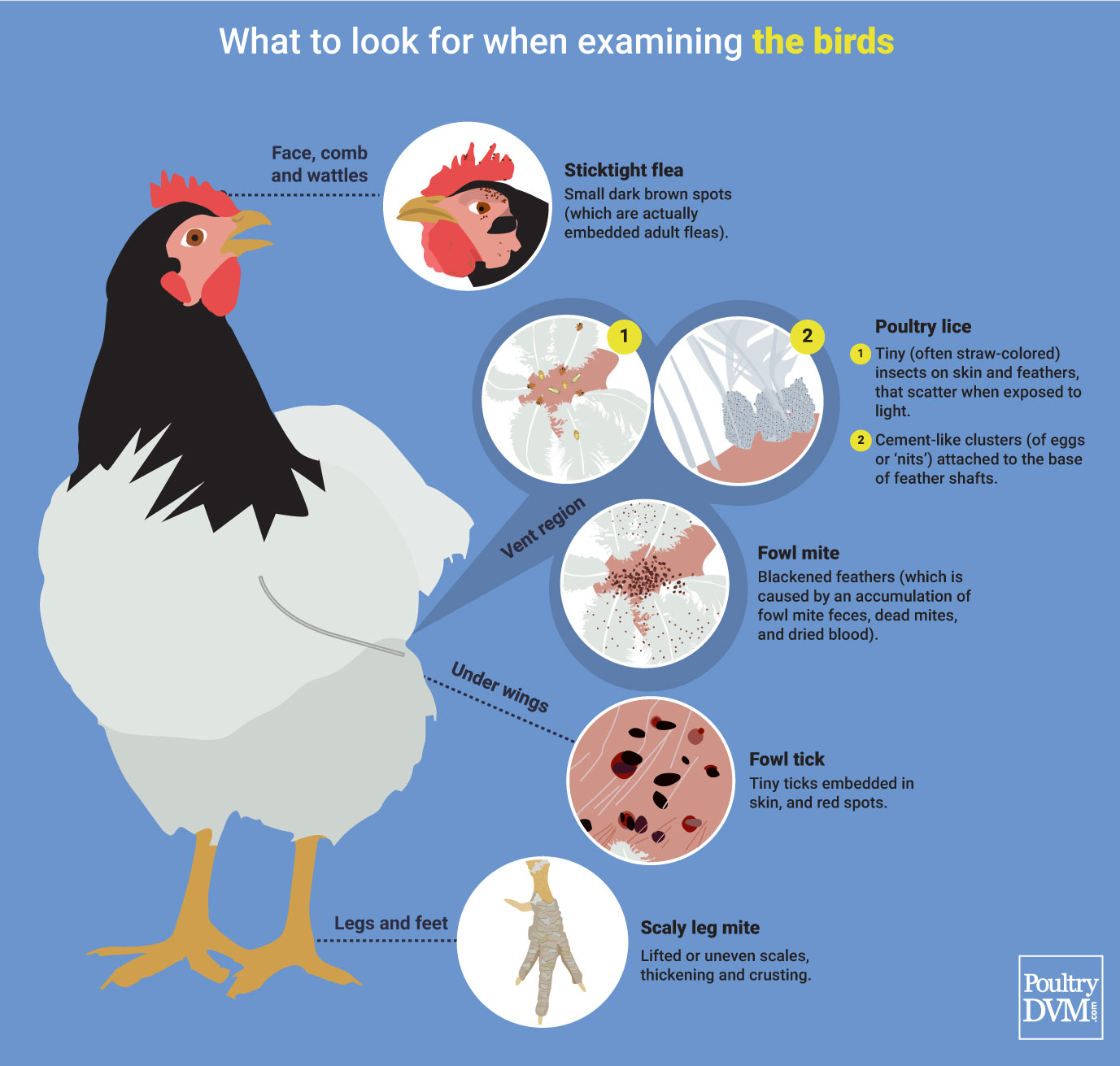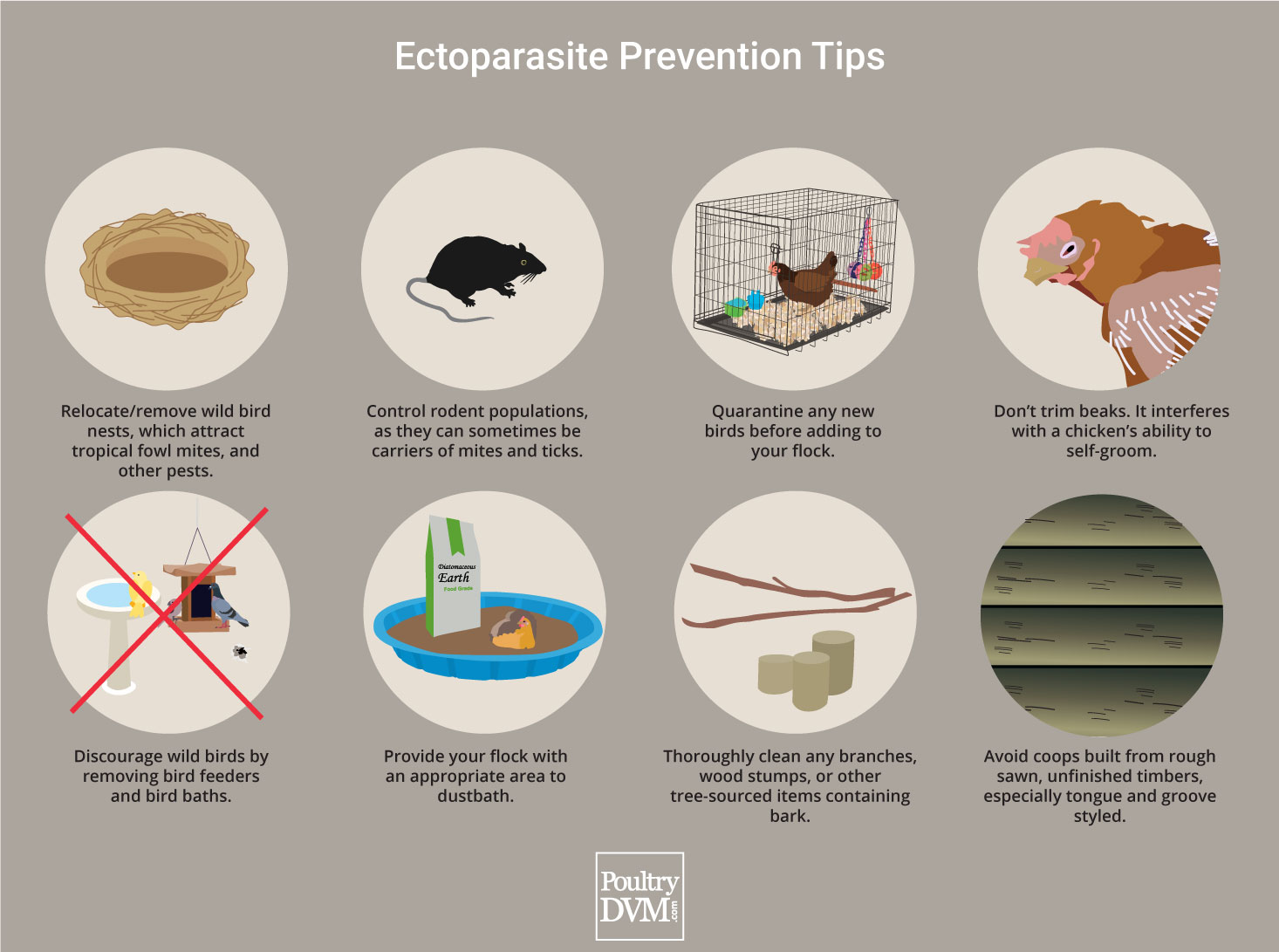There are a number of different ectoparasites (external parasites) which target backyard chickens, ducks, and other poultry. Properly identifying the pest is key to successfully eradicating them. Since most of them are quite small, some barely visible to the naked eye, it can be difficult to detect their presence, and figure out which pest it is unless you know what clues to look for.
Flock behaviors to watch for:
- Restlessness
- Frequent scratching/irritation
- Increased preening
- Change in nightly perch location
- Suddenly not wanting to go into the coop.
- Hens not laying eggs in nestboxes.
What to Look for When Examining the Coop
- Pay particular attention to cracks and crevices in the wood, and any hollow spaces.
- At night, look for mites crawling along perches and walls.
- Wipe underside of the perch with a white tissue and look for smears of blood.
- Excreta (resembles cigarette ash) and feces, which is often just outside the area the mites are hiding.
These pests will move into your coop, where they will live full time. They will hide during the day in cracks and crevices, sometimes hollow spaces like within the walls. At night, they will come out of their hiding spots to feed on your birds as they perch.
What to look for when examining the birds:
Birds should be checked for lice and mites at least twice a month. Examination involves spreading the bird’s feathers in the vent, breast, and thigh regions to look for egg clusters or feeding adults at the base of the feathers. The presence of some lice on most birds or of egg clusters on one or more birds is enough to indicate the need for treatment.
These pests live on chickens full time, in all stages of life except for the fleas (which only live on the bird as adults), and the tropical fowl mite (which is sometimes found in nestboxes).
- Head Louse (Cuclotogaster heterographus): This species of poultry lice lives full time on the bird, near the base of feathers on the head and neck. It feeds on barbules of feathers by cutting the barbules into short pieces and using its front legs to manipulate the bits through the mandibles.
- Shaft Louse (Menopon gallina): This species of poultry lice are often observed in “single-file” along the shafts of feathers. They are pale yellow, and about 2 mm in size. It feeds on feather and shaft particles. These mites are less injurious to their hosts than the chicken body louse. The eggs are cemented individually at the base of the feather shaft or along the feather barb in the breast and thigh regions. Eggs hatch in 4 to 7 days. Take 10-15 days to reach adults. Adult can lay from 50-300 eggs in its 3-week lifespan. Adult shaft louse are found on the feathers of the breast and thighs of the bird.
- Chicken Body Louse (Menacanthus stramineus): This chewing louse is very common on chickens, which transmit it by direct contact with each other. It lives and feeds on the skin of the breast, thighs, and vent regions. The female glues its eggs (referred to as ‘nits’) in masses around the base of the feathers. It sometimes chews through the skin and causes bleeding and inflammation. Heavy infestations can kill the bird. Infested birds are isolated and treated with an insecticide (dusting powder, sprays, and ivermectin). These lice move rapidly over the body feeding on sloughed epithelial cells and blood. In heavy infestations birds exhibit patches of skin with small blood clots, sloughing scabs, and oozing tissue exudate. Most individuals are found around the vent of the host where feathers are short and sparse, but in heavier infestations these lice may be all over the body.
- Wing Louse ( Lipeurus caponis): This species of poultry lice have a narrow, elongated shape. Their eggs are found attached to the chicken’s feathers, and hatch in 4-7 days.
- Sticktight flea (Echidnophaga gallinacea): The Sticktight flea attaches itself permanently to the chicken, usually around the bird’s face, comb, and wattles. The eggs of the female flea falls to the ground, where they hatch. The embedded flea can cause skin irritation and localized swelling. If enough fleas infest a chicken’s eye area, the tissue reaction can cause them to go blind. Repeated treatment is needed until all the eggs hatched or been removed.
- Scaly leg mite (Knemidocoptes mutans): The scaly leg mite burrows into the skin tissues under the leg scales, causing inflammation and exudation. The life cycle can be completed in 10 to 14 days and occurs entirely on the host. It is quite contagious and the birds often get the mites from the ground. It lives on poultry and domestic and wild birds. All stages of this mite live on the bird; it travels from bird to bird by direct contact between hosts. It lives within the skin of the bird on the legs and feet. It lays its eggs in the tunnels in the skin; all stages live in these tunnels. The burrowing mites can cause irritation.
- Northern Fowl mite (NFM) (Ornithonyssus bursa): All development stages (i.e. larvae, nymphs and adults) can be found on the birds, mostly on the skin around the base of the feathers. Infestations often start around the vent and then spread towards the tail, the legs and the back. Since the mites spend their whole life on the birds, the feathers become progressively soiled with excrements, dead mites, dried blood, etc. This cumulated dark dirt on the base of the feathers, particularly around the vent is often a clinical symptom for diagnosis. NFMs, mite eggs, and mite excrement can be seen along the feather shafts. Female mites glue their eggs to the feathers, which hatch in 1 to 2 days. NFMs are most commonly found on the cloaca, breast, and thighs, less commonly the head and neck.
- Tropical Fowl mite (Ornithonyssus sylviarum )
Ectoparasite Prevention Tips
- Relocate/remove wild bird nests, which attract tropical fowl mites, and other pests.
- Discourage wild birds by removing bird feeders and bird baths.
- Provide your flock with an appropriate area to dustbath.
- Thoroughly clean any branches, wood stumps, or other tree-sourced items containing bark.
- Avoid coops built from rough sawn, unfinished timbers, especially tongue and groove styled.
- Don’t trim chickens’ beaks. It not only causes permanent damage and pain, but it interferes with their ability to preen and remove ectoparasites from their bodies.
- Quarantine any new birds before adding them to your flock.
- Control rodent populations, as they can sometimes be carriers of mites and ticks.



